WE ALL RIDE
Guarina Lopez
Guarina Lopez is a visual artist, storyteller, and the founder of Native Women Ride, advocating for the people and land of Indigenous communities. A member of the Pascua Yaqui tribe of Tucson, Arizona, she's been riding for 25 years mainly as a commuter. She now lives and rides on the ancestral lands of the Piscataway and Anacostan tribes in Washington DC, where she recently completed a 220-mile ride to raise awareness for the US Indian boarding schools that have largely been written out of the history books. Her work on and off the bike is bringing together Native and Indigenous cyclists through telling their stories, breaking stereotypes, and building community.
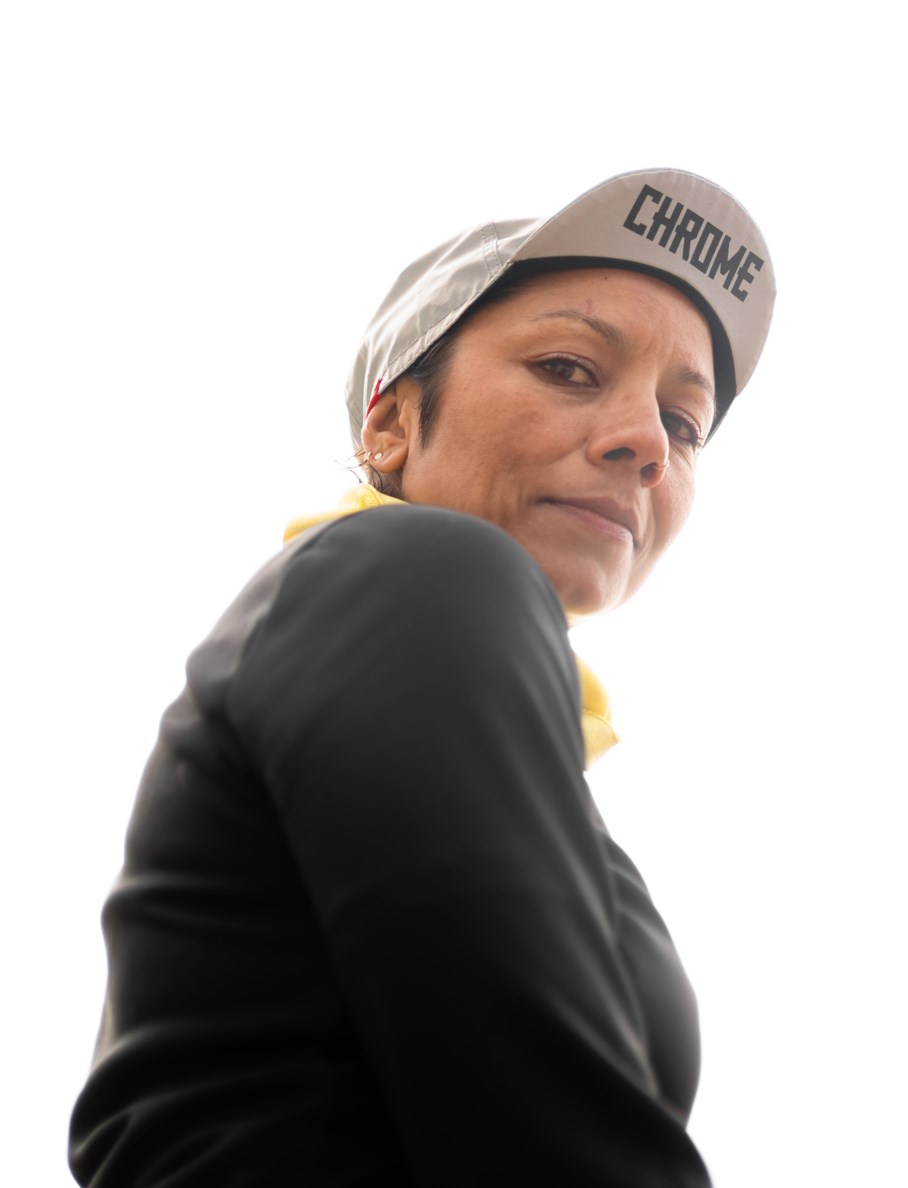
Native Women Ride was born of the loneliness and isolation of the pandemic. It was a product of having found other like-minded groups and wanting to create my own. In retrospect, I longed to find others like me because I found myself in the same situation that I have been in my entire life: one of a handful of Natives in a predominantly white space. I was inspired by my Navajo friend Verna Volker, who is the founder of Native Women Running, which she began to bring visibility to Native women in a sport that largely ignores Indigenous contributions to running. It has become an amazing virtual community that has led to deeper real-life connections with Indigenous women from all over Turtle Island (North America). I aspired to create this kind of community for Native women on bikes.
When I conceived the idea, I knew it would be a virtual community and figured it would be just myself and a few friends. My main focuses were to share Native stories on bikes, educate about the land we ride on, and to raise awareness about and fundraise for issues impacting Native people.
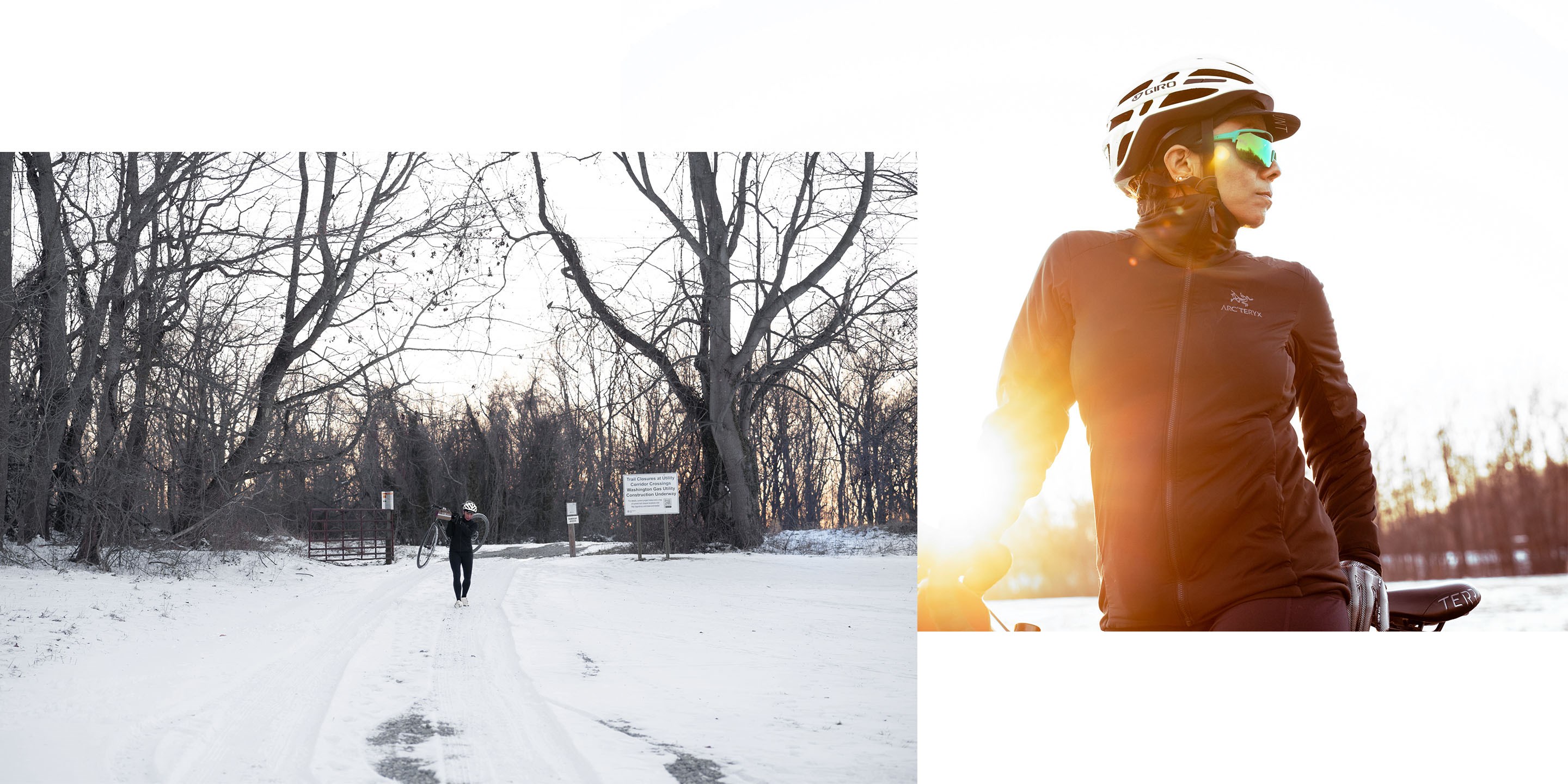
Last summer I organized the first scholarship fundraiser for Native students in public health at the University of Arizona. Then after the revelations that Native children’s bodies were being found in mass graves in Canada and the US at residential and boarding schools, I was wracked with guilt and weighed down with so much anger. I organized a 220-mile awareness ride from Washington, D.C. to the Carlisle Indian Boarding School Cemetery in Pennsylvania where close to 200 Native children’s remains have yet to be repatriated to communities.
Around the same time that I started Native Women Ride, I applied for one of many new BIPOC scholarship opportunities created in the wake of racial unrest after the death of George Floyd. Thanks to Ayesha McGowan's Thee Abundance Mini Grant, I threw my hat into crit racing for the first time at the Tour of America's Dairyland. The learning curve was steep, but what I did have within me was the strength and drive to try something new that would also push me physically.
Movement has been a part of my life for as long as I can remember. I grew up running and dancing, practicing martial arts, yoga, and swimming. I used my body to act out the many emotional and physical traumas I had endured. I believed that my physical strength could mask the turmoil I carried and will probably always carry with me.
Riding my bike on the other hand, performed a totally different function in my life. I was raised with my Yaqui traditions and have never known a life when Mother Earth and our more-than-human relatives (plants, animals, ecosystems, ocean, and stars) were not at the center of our existence. To say that I became an environmentalist at a certain age denies the generations-long connections that my relatives have to the natural world. Riding a bike was for me a mode of transportation that did not contribute to global warming, it was the thing that connected me to other activists when we took to the streets in San Francisco’s Mission District fighting evictions or during critical mass. My bike brought me everywhere. Other than my camera, it became the thing that allowed me a kind of freedom so pure and powerful that I began to think of my bike as an extension of my body. My bikes have been such good friends that they even had their own names: Rita, Purple Rain, Burro, and now Celia Cruise and Wilma Mankiller to name a few.
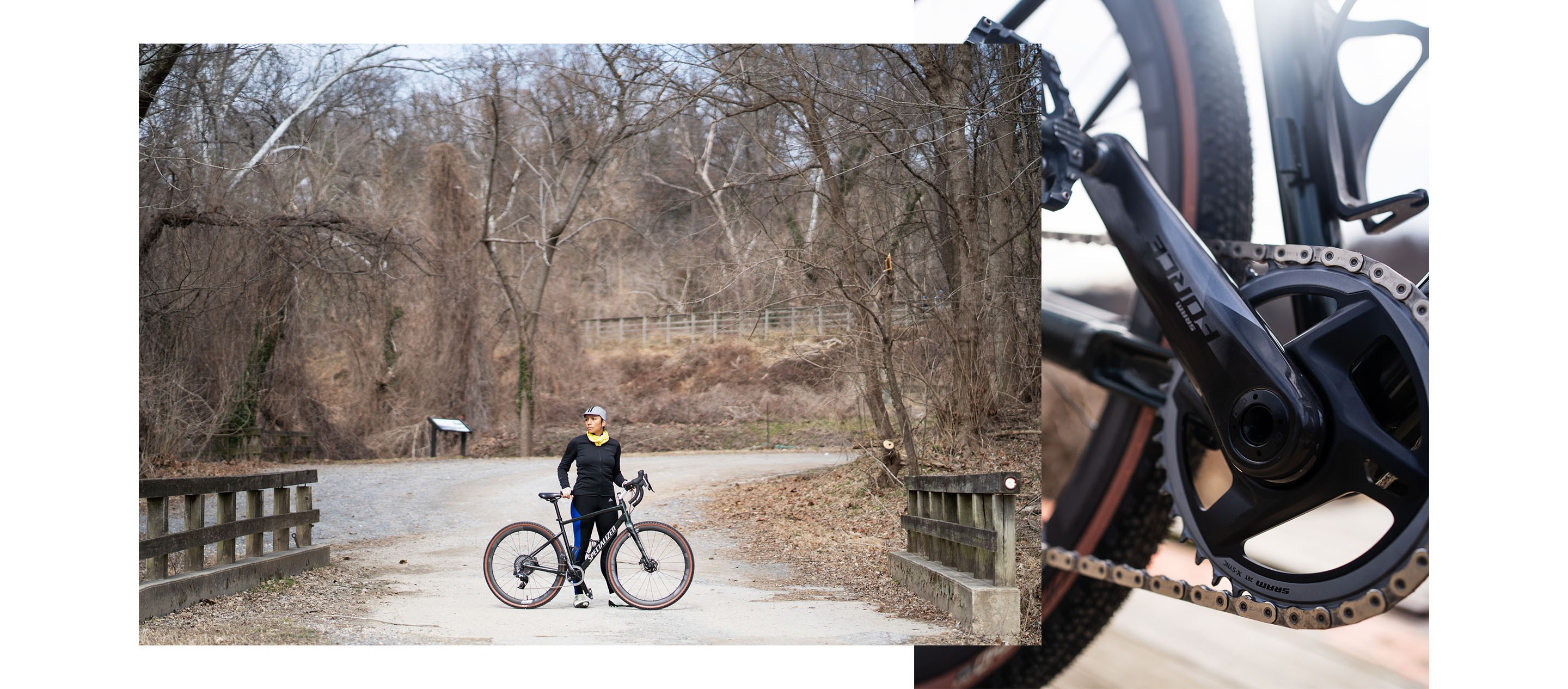
Cycling can be inherently solitary, and like every person in the world, I craved community more than anything these last few years. Native Women Ride was meant to be the antidote for what felt like the second coming of the apocalypse (Native people have already survived an apocalypse...It’s called genocide). But was social media really the place to do this?
What is impossible to fully express here is the level of trust it takes to build and sustain an Indigenous community while also respecting how distinct we are from one another. There are more than 570 federally recognized tribes, numerous state-recognized tribes, and many that have lost or not received recognition. We have grown wary of western society’s extractive nature, and social media is not exactly a safe place to begin with. Creating trust is a lifelong process. It requires commitment for the benefit of the community and never for the individual. I knew that everything I did, who I highlighted, how I used my words, what I fundraised for would be scrutinized and potentially taken out of context. What people might not know is that each person I highlight, I aim to connect with personally and for life. This is how Native communities work, always operating for the betterment of us all today while laying the groundwork for the next seven generations. Native Women Ride was never going to be “just” a social media page. It had to be a community.

The second thing that is perhaps less difficult to explain is the danger of exposing our communities on a platform like social media. Just like in real life, Natives are a much smaller percentage of the population and because we live in a colonial and patriarchal society, white supremacy and racism is ever present. So when I say that I wanted to create a safe space, this isn’t a hashtag moment. I am literally concerned for any Native person who shares anything on the page and for all issue affecting our communities, be it equal access to education, MMIR2S, or boardingschool awareness.
The good news is that I have been doing this as a photographer and storyteller for a very long time. The focus of my work for many years has been to investigate where Native people are situated in western society while retaining our cultures and sustaining our communities. Native Women Ride is no different. We’re just doing it on bikes.
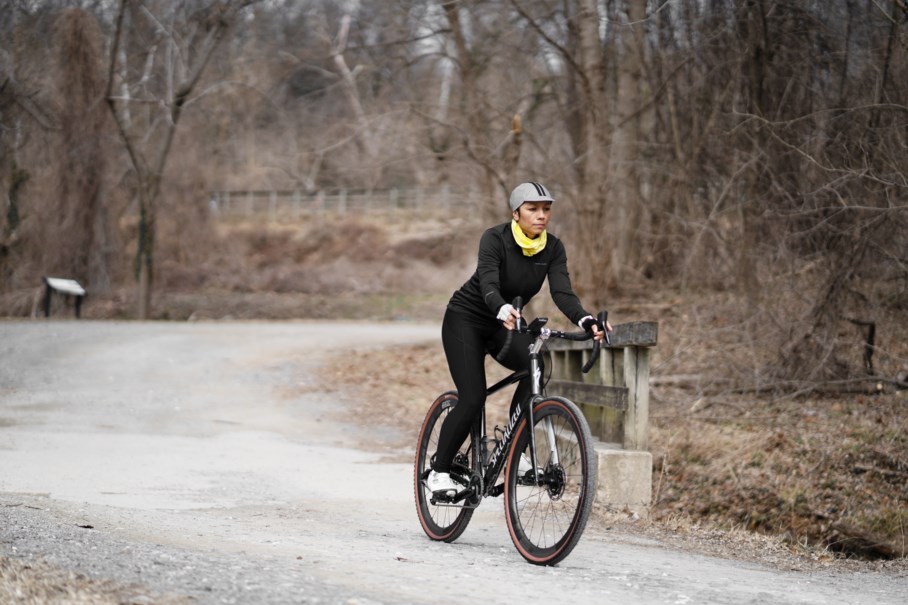
My biggest fear is exploitation, tokenization and entitlement in a space created by and for Native people. I think it is important to mention here that social media is still media and needs to be treated as such when it comes to historic representations of Native people in media and pop culture. I realize that social media can function in a variety of ways, but what I am trying to build virtually has the exact same expectations as if it were a brick-and-mortar community center. What I can’t control is who follows me and how colonial they act on my page. Just like the land, this virtual community is for us, and I intend to protect it.
I feel like I’m telling a scary story, but I kind of am because this is bigger than bikes. Fact 1: Cycling is a predominantly white cis-gender-male dominated sport. Fact 2: So is cycling on social media. Fact 3: When non-white people attempt to enter a space dominated by white people, we have historically been unwelcomed. Fact 4: Cycling on social media is no different. You see where I’m going, right? When people of color come together in a space designated for whiteness, there will always be barriers to entry. Cycling as a sport already has barriers to entry, including financial constraints, time to train, access to equipment, safe places to train, race entry fees, travel and lodging at races, not to mention physical ability.
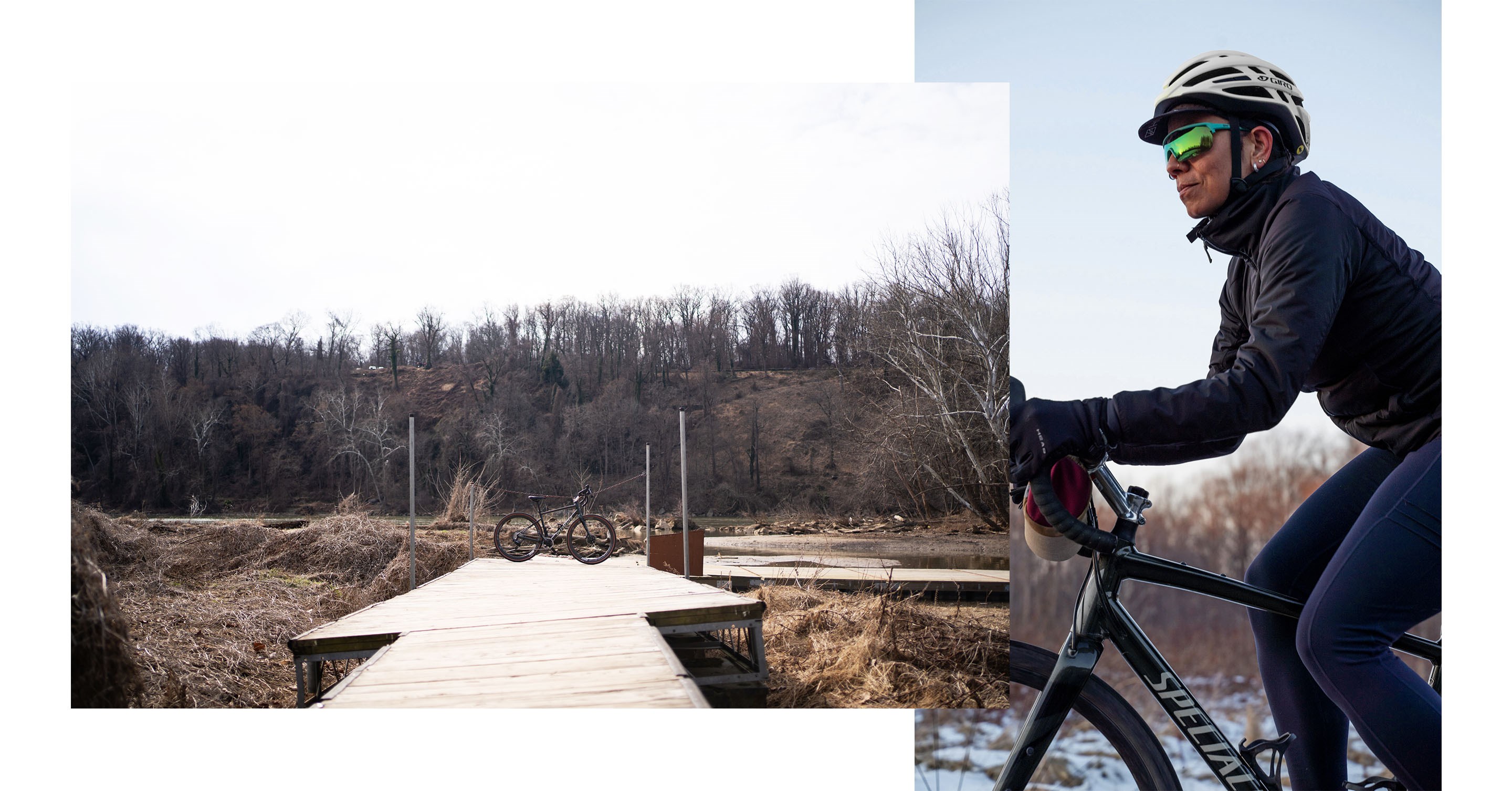
My desire to create a virtual community was not only a bold endeavor but incredibly risky. Native Women Ride on the face of it exudes Native pride and Native joy as it should, but our resilience should not be a mask for the emotional traumas that we have experienced for hundreds of years. It was never going to be the antidote to existing racism or colonialism. These things will continue to live on.
And just like in real life, Native Women Ride runs the risk of being attacked by trolls or bullies, by social media settlers who want to claim your Native space. Colonization exists even on the internet, and Native women in particular are attacked far more harshly than Native men in any arena, real or virtual. Despite all these realities, I take pride in what Native Women Ride has become. It was never just about me, but my community, and I intend to keep it that way.
While the community was created for Native women, I have also featured Native brothers on bikes because I thinks it’s important to show successes in our communities. I’m tired of people associating Natives with statistics that exist because colonialism and capitalism were imposed upon us. Native women have for centuries held our communities together. They have been the first ones on the front lines of many fights and the keepers of our culture. I am also highly aware of the limitations of the word ‘woman’ and in no way use it to deny entry to Femme, Trans, and Non-Binary community members. Native women, however we choose to identify, must be understood to exist within the construct of a settler colonial society though we will never be defined by it. Native Women Ride invites other women to support us and show solidarity, but I will never tolerate a false belief of sisterhood that refutes the systems of oppression unique to women of color.
2022 is already shaping up, and I am planning another boarding school awareness ride and an environmental justice ride. I will continue to reach out to race directors and encourage them to have more diversity initiatives so that we can get more Natives to the starting line. I also hope to start a mutual aid fund for Native cyclists in need of bike components and gear. I am so proud to know that Native Women Ride is becoming a place for Native cyclists to gather and share our stories, and I will do my best to sustain this community. I ride for my community, for my ancestors, for the land, and I hope that our stories and awareness rides will inspire others to find freedom on bikes and Native joy.
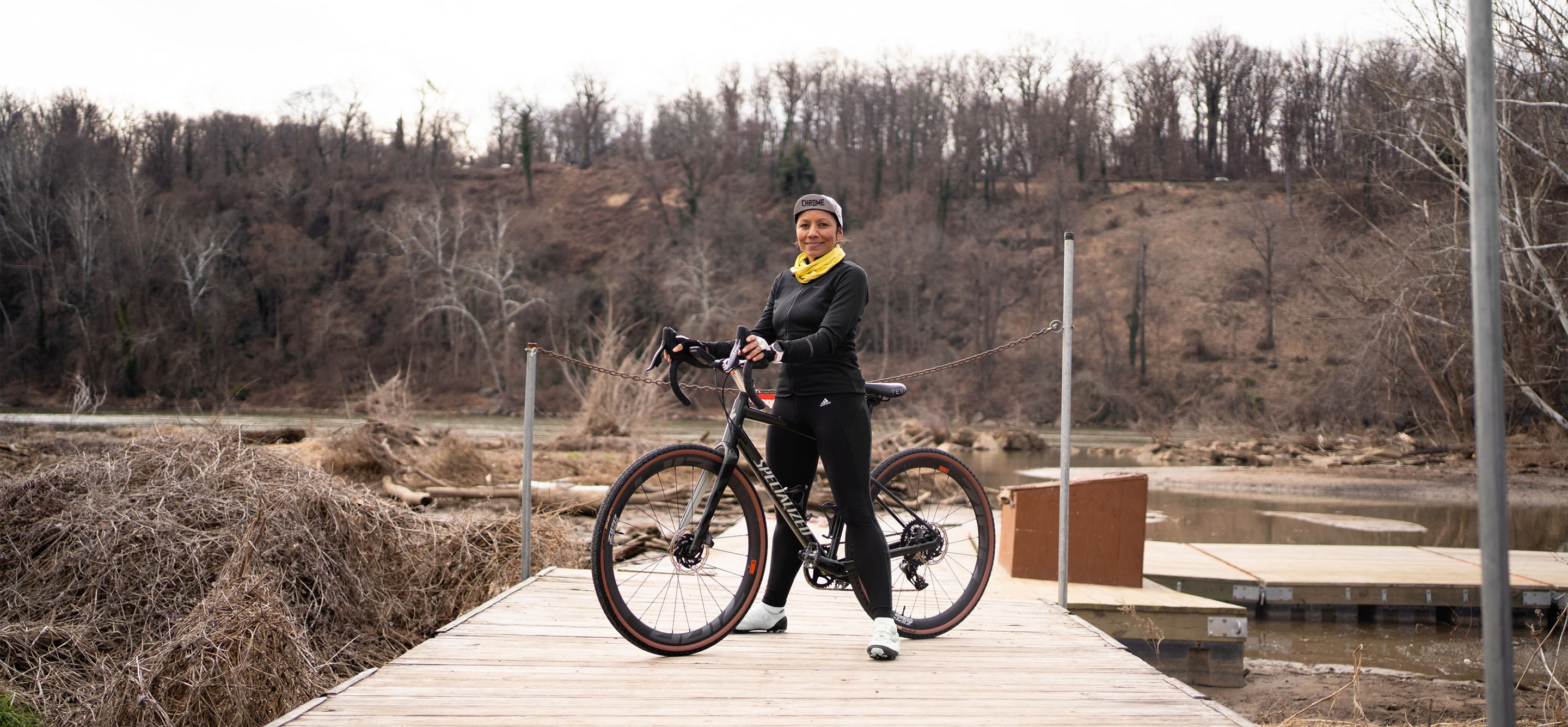
Words by Guarina Lopez. Photos by Hanad Ali. In honor of Guarina's essay for International Women's Day, SRAM is excited to support her work with Native Women Ride through the following:
- The Mid South mini-team with three cyclists (Native and Black representation)
- Border Wall Awareness Ride (both human and environmental rights focused)
- Boarding School Awareness Ride
- Environmental Justice Ride
- Mutual aid fund
Learn more about Native Women Ride here.